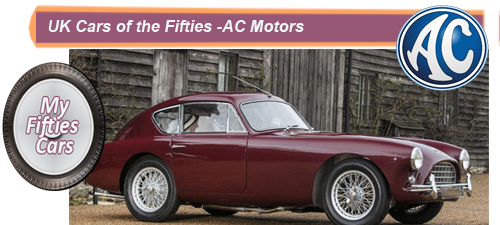
The Wellers, both skilled engineers, were very interested in taking their part in the fast-growing UK car industry.
Unfortunately, talented as they were, the brothers' decision-making processes left a lot to be desired, meaning that an inordinately long gap, between 1903 and 1905, was required to determine in which direction the Weller’s project would develop, meaning production only got underway two years after the company was formed.
 The reason for the delay was that initially, the Weller brothers had set their sights on building touring cars, although, as soon as they began to put their dreams into action, financial reality soon to bite.
The reason for the delay was that initially, the Weller brothers had set their sights on building touring cars, although, as soon as they began to put their dreams into action, financial reality soon to bite.
Under pressure from their financial backers, the Wellers switched the bulk of their already limited production facilities, to a simple three-wheel delivery vehicle, the Auto-Carrier (AC).
The AC proved to be a great success, thanks to its ability to manoeuvre quickly around the crowded streets of the UK capital.
From that point onwards, despite constantly having to pilot their way through some financially turbulent years, AC succeeded in remaining in business, always in private hands till well into the Nineteen Seventies.
 Thanks to their success with the Auto-Carrier, freed from the shackles of their constant cash problems, in 1919 the Weller Brothers eventually achieved their dream of switching some of their production into building a touring car.
Thanks to their success with the Auto-Carrier, freed from the shackles of their constant cash problems, in 1919 the Weller Brothers eventually achieved their dream of switching some of their production into building a touring car.
![]()
 Despite the Weller’s high hopes, AC failed to make any real impact on the touring car sector - a failure that caused the company to go into liquidation by the end of the Nineteen Twenties.
Despite the Weller’s high hopes, AC failed to make any real impact on the touring car sector - a failure that caused the company to go into liquidation by the end of the Nineteen Twenties.
Despite their shortcomings., the Weller Brothers had succeeded in keeping their company afloat for around ten years, no mean achievement in the early and uncertain years of the UK car industry.
Without the Wellers to push them forward, it would take five years before AC Motors succeeded in getting back into production.
In the mid –Thirties, AC company was bought out of liquidation by yet another set of brothers, the Hurlocks, who rapidly gave up on producing touring cars instead switching their activities to sports cars and saloons.
Under the Hurlocks, AC began to enjoy some success throughout the Thirties, thanks to their popular two-seater 16/80 and 16/90 sports cars, until war clouds began to darken the horizon.
Like most other UK auto manufacturers, AC switched their entire production towards the war efforts.
 Post-war production restarted in 1947, with the traditional type 2-Litre model and Buckland open Tourer, both of which enjoyed fair success.
Post-war production restarted in 1947, with the traditional type 2-Litre model and Buckland open Tourer, both of which enjoyed fair success.
However, with no modern designs in development, AC were high on the list of car manufacturers who were expected to not survive too long in the post-war years.
 What did buy the company some valuable time was a contract to develop and produce a single seat invalid carriage for the UK Government.
What did buy the company some valuable time was a contract to develop and produce a single seat invalid carriage for the UK Government.
This classic invalid car not only played a major part in increasing the mobility of the disabled in the UK , but also played a significant role in keeping the company afloat, as well as providing them with much-needed investment capital to finance a new design program.
![]()
 Known as the AC Petite, the car was exceedingly simple, solidly built and earned profits for AC until the middle of the Seventies.
Known as the AC Petite, the car was exceedingly simple, solidly built and earned profits for AC until the middle of the Seventies.
 Some of these profits were ploughed back into the company, with the launch of an AC-engined version of John Tojeiro's racing sports car into production.
Some of these profits were ploughed back into the company, with the launch of an AC-engined version of John Tojeiro's racing sports car into production.
This was a complete design breakaway for AC and turned out to be a tremendous commercial success.
Both the Ace and the Aceca that spun off it were attractive, sporty cars, and once fitted with a more powerful engine supplied by Bristol they had the performance equal to their looks and handling.
Having developed what looked like a winning formula with the Ace and the Aceca, AC then stumbled with newer model launches, in particular with the Greyhound, which was bigger, heavier, and a lot more expensive.
Despite that setback, a significant step forward for AC came in 1962 when the American enthusiast Carroll Shelby persuaded them to redesign the Ace, the result being the Ford-USA V8 engined Cobra.
 Throughout AC's long history, their periods of stability and financial success the company endured was driven by their ability to manufacture simple, three-wheeled cars, first the Auto-Carrier and later the Petite.
Throughout AC's long history, their periods of stability and financial success the company endured was driven by their ability to manufacture simple, three-wheeled cars, first the Auto-Carrier and later the Petite.
The profits earned from these "bread and butter" vehicles went a long way to financing a dream- to build quality sports cars that would go on to grace UK and US roads for many years.
Take me back to the home page


